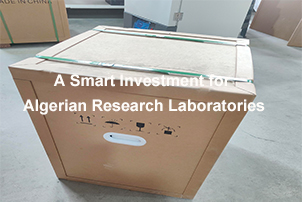The ELISA Microplate Reader is an essential instrument in laboratory diagnostics, particularly for quantitative measurement in enzyme-linked immunosorbent assays (ELISA). This device operates on the principle of detecting light absorbance or fluorescence emitted from a microplate well after a substrate reaction, providing precise and rapid analysis of biological samples. Widely used in medical, research, and pharmaceutical laboratories, the ELISA Microplate Reader helps in detecting proteins, hormones, antibodies, and antigens, making it invaluable for applications such as disease diagnosis, drug development, and biomarker identification.
What is the principle of the ELISA reader?
An ELISA reader is a specialized spectrophotometer, an instrument used to measure the intensity of light across the entire spectral range. A microplate reader uses colorimetric, fluorescent or luminescent reagents to measure the concentration of a target compound by generating a signal that is detectable by the reader. It works by measuring the reaction of antigens and antibodies in solution through enzymatic activity.
ELISA readers have an optical system that illuminates the sample with light and then reads the intensity and wavelength of the light emitted by the sample. This allows the reader to calculate the light absorption of each sample and convert the returned light beam into a data set so that the user can clearly interpret the results.
Direct ELISA vs Indirect ELISA
What is a Direct ELISA?
In a direct ELISA, the antigen is immobilized directly onto the wells of a microplate. Antibodies are then added to the solution, which binds directly to the antigen in preparation for the addition of the enzyme. Finally, the test enzyme is added, which produces a reaction and visible color change. Advantages include fewer steps, fewer reagents are needed, and there is no reaction with the secondary antibody to confuse the results.
What is an Indirect ELISA?
Indirect ELISA is a two-step process in which an antigen sample is added to the wells of a microtiter plate. First, a primary antibody is added and binds to the sample. Next, a secondary antibody is added that binds to the primary antibody. This method offers a high degree of flexibility and signal amplification. However, it can lead to cross-reactivity of the secondary antibody, which can confuse the results.
What are the uses of the ELISA reader principle?
- ELISA readers are used for a wide variety of purposes. The reactions that can be detected by the reader can be used to diagnose a variety of diseases. These include: AIDS, cancer, Lyme disease, anemia, and more.
- Disease Diagnosis: To detect antibodies, antigens, hormones, etc. in blood or other biological samples to help diagnose infections, immune diseases, etc.
- Drug discovery: In the drug discovery process, ELISA readers are used to assess the effect of drugs on specific biomarkers and screen potential drugs.
- Biomarker Detection: Used to identify biomarkers associated with diseases or health states to aid in medical research and clinical applications.
- Laboratory analysis: Widely used in scientific research, such as cell biology, immunology, molecular biology, etc. for quantitative analysis of proteins, antibodies, antigens and other molecules.
Considering the differences in reader specifications and performance capabilities, how can we ensure the accuracy and reliability of ELISA results when using different types of microplate readers?
ELISA Microplate Reader User’s Guide
ELISA (Enzyme-Linked Immunosorbent Assay) is a widely used technique in life science research for the detection and quantification of specific molecules. In order to obtain accurate and reliable results in ELISA experiments, it is critical to optimize the experimental process, including the use of key equipment such as microplate readers and plate washers. Next, we will exemplify 7 tips to improve the accuracy of ELISA results.
- Proper instrument calibration:
Regular calibration of the ELISA Microplate Reader ensures accurate readings - Optimal plate loading:
Proper loading of the microplate is critical to obtaining consistent and uniform results. Take care to place samples, controls and standards correctly in the microplate wells. Avoid overloading or underloading the wells as this can lead to inconsistent measurements. In addition, ensure that the sample is evenly distributed across the plate for reliable data analysis. - Thorough washing step:
Effective cleaning is essential to remove any unbound material and reduce background noise. Follow the recommended cleaning protocol provided by the microplate cleaner manufacturer. Ensure that the cleaner distributes the cleaning solution evenly and completely aspirates the liquid without leaving any residue. Optimize wash parameters, such as the number of washes, volume, and speed, to achieve the best results for your specific ELISA assay. - Optimize incubation conditions:
Carefully determine the optimal incubation conditions for your ELISA assay. Factors such as temperature, time and shaking speed can significantly affect the binding kinetics of the assay. - Use high-quality reagents:
Select high-quality reagents for your ELISA experiment. This includes antibodies, detection substrates, buffers and standards. Choose reagents from a reputable supplier known for consistency and reliability. Poor quality reagents can lead to inconsistent results, high background noise and reduced sensitivity. Regular quality control testing of reagents helps ensure reliability and performance. - Optimize microplate reader settings:
Use the customizable settings on the microplate reader to optimize assay parameters. Adjust parameters such as gain, integration time, and filter to optimize signal-to-noise and obtain the most accurate measurements. Perform experiments to determine the optimal reader settings for a specific ELISA assay and make necessary adjustments as needed. - Data Analysis and Validation:
Accurate data analysis and validation are critical to obtaining reliable results. Analyze your data using appropriate software provided by the microplate reader manufacturer or other reliable analysis tools. Apply appropriate statistical methods to validate your results and ensure reproducibility.





Get Social